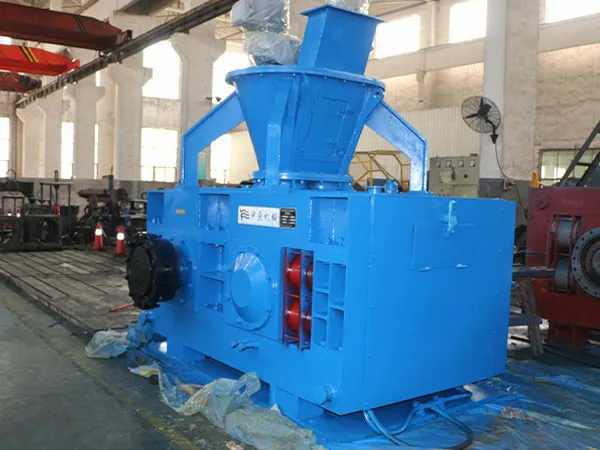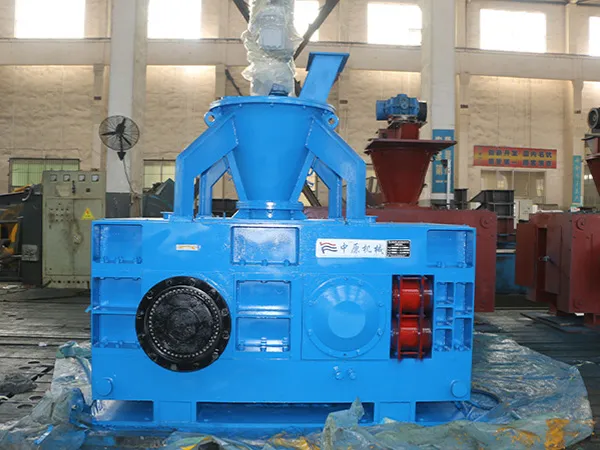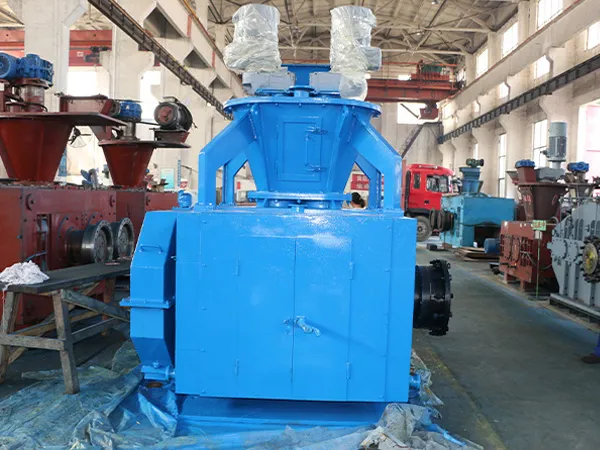

-
Products
-
Application


The energy consumption of a briquetting machine is a critical factor that directly impacts the profitability and environmental sustainability of a briquetting operation. A thorough analysis involves understanding where energy is used, what factors influence its consumption, and how it can be optimized.

The total energy consumption of a briquetting plant is not just the machine itself but the entire process line.
Main Press Motor: This is the primary energy consumer, typically accounting for 70-90% of the machine's direct energy use. It powers the mechanical or hydraulic system that applies immense pressure to the raw material.
Mechanical Piston Press: The motor drives a flywheel, which provides the high-impact force for compression. It has high peak power draws.
Screw Press (Extruder): The motor provides continuous high torque to turn the screw that forces material through the die.
Hydraulic Press: The motor runs a hydraulic pump to build up fluid pressure, which then drives the compression ram.
Heating System (for Screw Presses): Screw presses require an external heating system (heating collars/bands) to raise the temperature of the die to 280-380°C (530-715°F). This heat melts the lignin in the biomass, which acts as a natural binder. The heaters represent a significant and constant energy draw, often 15-25% of the machine's total consumption.
Ancillary and Pre-Processing Equipment: This is a crucial and often underestimated part of the total energy footprint.
Dryer: If the raw material's moisture content is too high (>12%), a dryer is needed. Drying is often the single most energy-intensive process in the entire plant, sometimes consuming more energy than the briquetting machine itself.
Crusher / Hammer Mill: Reduces the size of the raw material to a suitable, uniform particle size (e.g., 3-5 mm). This requires a powerful motor.
Conveyors and Feeders: Screw conveyors, belt conveyors, and feeding mechanisms use smaller motors but run continuously, contributing to the overall load.
Control Panel and Automation: The PLC, sensors, and other electronics consume a relatively small amount of power but are essential for operation.
Several variables can drastically change the amount of energy required to produce a ton of briquettes.
|
Factor |
Impact on Energy Consumption |
|
Raw Material Type |
High: Hardwoods (like oak) or materials with low lignin content require more pressure and energy than softwoods (like pine) or agricultural waste (rice husk). |
|
Moisture Content |
Very High: This is the most critical factor. The optimal range is 8-12%. <br> • Too High (>12%): Energy is wasted turning water into steam, which can also cause briquettes to crack. <br> • Too Low (<6%): Material becomes too hard and less pliable, requiring more force to compress and bind. |
|
Particle Size |
High: Large or non-uniform particles require more energy to break down and compact within the die. Fine, consistent particle size leads to smoother operation and lower energy use. |
|
Bulk Density |
Moderate: Lighter, fluffier materials (like sawdust) require more compression volume and energy to achieve the final dense briquette compared to denser materials (like rice husk). |
|
Machine Type |
High: Different technologies have inherently different energy profiles (see section 3). |
|
Operational Parameters |
High: Running the machine at a feed rate higher than its optimal design capacity increases energy per ton and causes excessive wear. Incorrect pressure or temperature settings also lead to inefficiency. |
|
Machine Condition |
High: Worn-out parts like the screw, die, or piston ram increase friction and require the motor to work harder for the same output. Poor lubrication has a similar effect. |

The choice of briquetting technology is a major determinant of energy consumption. The key metric used for comparison is Specific Energy Consumption (SEC), measured in kWh per ton of briquettes produced.
|
Machine Type |
Mechanism |
Energy Profile |
Typical SEC (kWh/ton) |
|
Mechanical Piston Press |
High-speed punch from a flywheel-driven piston. |
High peak power draw during compression stroke. No external heating required; friction generates sufficient heat. |
40 - 75 |
|
Screw Press (Extruder) |
Continuous extrusion via a heated screw and die. |
High, continuous motor torque plus a constant energy draw from the heating elements. |
60 - 120 |
|
Hydraulic Press |
Slow, high-pressure compression via a hydraulic ram. |
Motor for the hydraulic pump runs intermittently or at varying loads. Generally more efficient for very high-density briquettes. |
50 - 90 |
Conclusion: For biomass without binders, mechanical piston presses are generally the most energy-efficient, as they do not require an external heating system. Screw presses produce very high-quality, uniform briquettes but at a higher energy cost due to the heaters.
A proper analysis requires data.
Instrumentation: Install dedicated power meters (energy loggers) on the main briquetting machine, the dryer, the crusher, and for the entire plant.
Establish a Baseline: Measure the total energy (kWh) consumed and the total briquettes (tons) produced over a set period (e.g., a week or a month).
Calculate Specific Energy Consumption (SEC):
SEC = Total Energy Consumed (kWh) / Total Briquettes Produced (tons)
Monitor and Track: Continuously track the SEC. A sudden increase in SEC often indicates a problem, such as:
A change in raw material quality (e.g., higher moisture).
A worn-out component (die, screw).
An operational issue (e.g., overfeeding).
Isolate Variables: When making changes, only alter one variable at a time (e.g., change moisture level but keep feed rate constant) to accurately measure its impact on SEC.
Optimize Raw Material: This is the most effective strategy.
Strict Moisture Control: Invest in a good dryer and moisture meters. Keeping moisture in the 8-12% sweet spot is paramount.
Consistent Particle Size: Ensure the crusher/hammer mill is functioning correctly to provide a uniform feed.
Improve Operational Efficiency:
Optimal Feed Rate: Run the machine at its designed capacity. Under-feeding is inefficient, and over-feeding causes jams and high energy spikes.
Minimize Idle Time: Turn off machines when not in use. The energy consumed during idle runs can add up significantly.

Invest in Technology:
Variable Frequency Drives (VFDs): Installing a VFD on the main motor allows it to adjust its speed and power consumption to match the load, saving significant energy during start-up and periods of lighter load.
High-Efficiency Motors: Upgrade older motors to modern high-efficiency standards (IE3 or IE4).
Heater Insulation: For screw presses, ensure the heating elements are well-insulated to prevent heat loss to the environment.
Proactive Maintenance:
Regular Lubrication: Reduces friction and mechanical losses.
Timely Replacement of Worn Parts: A worn die or screw is a major source of inefficiency. Monitor their condition and replace them before SEC rises dramatically.
By systematically analyzing and addressing these factors, a briquetting operation can significantly reduce its energy consumption, leading to lower operating costs and a better environmental footprint.

Official Agent of ZY MINING in Russia.
Please enter here.
Add: Luoxin Industrial Zone,Luoyang City,Henan Province P.R.C.
Tel: +86-379-67313306
E-mail: gloria@zyksjx.com